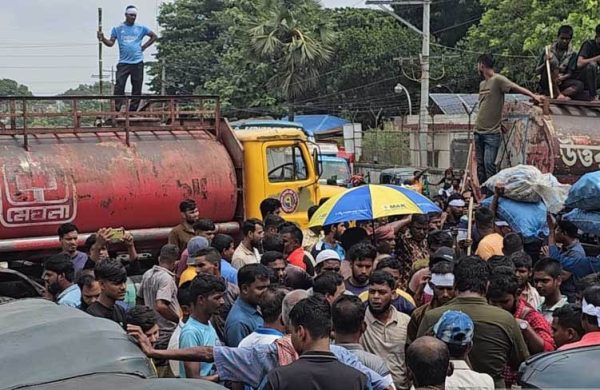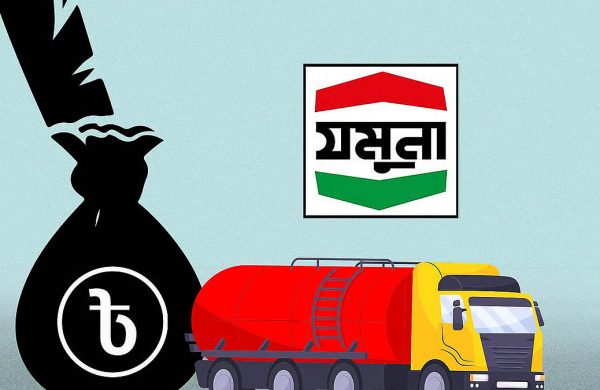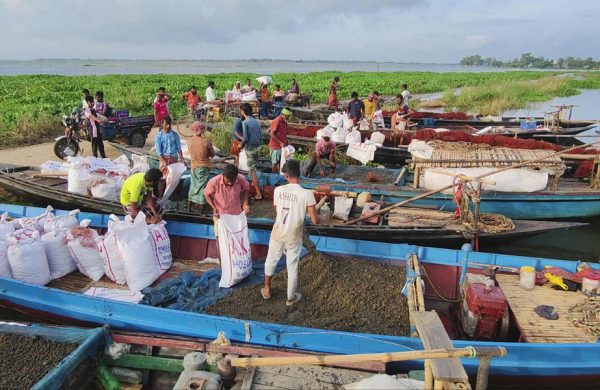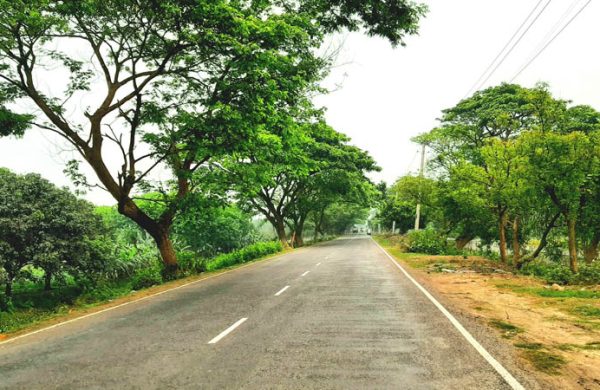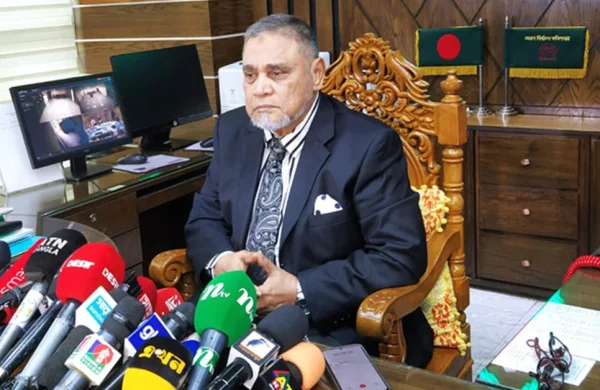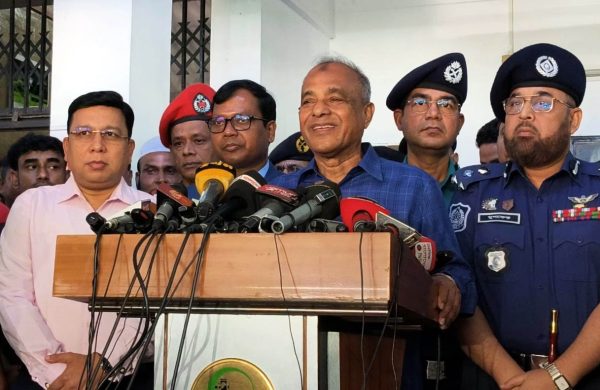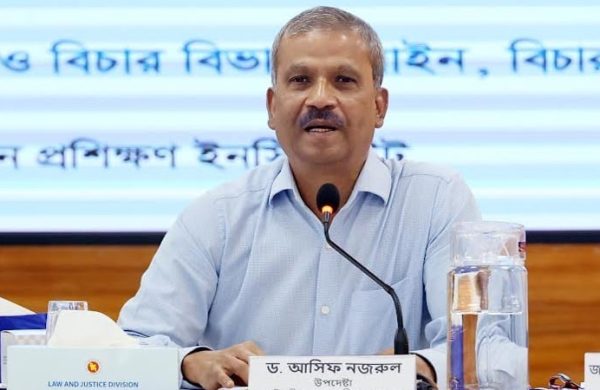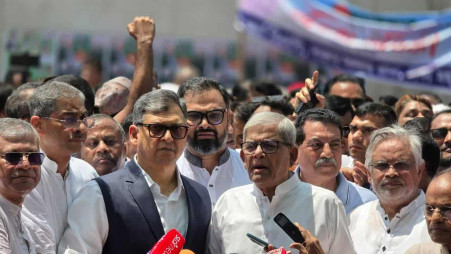As another flood season looms, ground realities buck official preparedness claims
- Update Time : Saturday, June 21, 2025
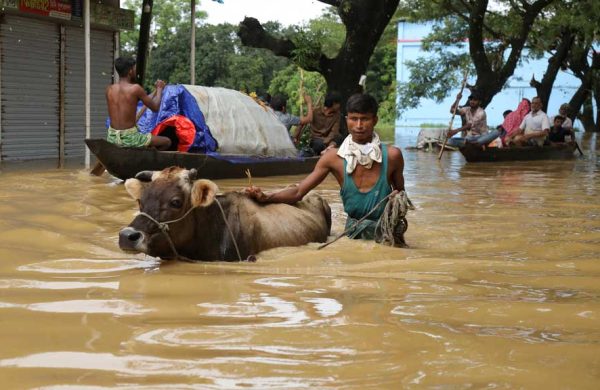
Staff Correspondent:
The monsoon clouds are gathering once again to reignite fears for many like Arman Hossain of Cumilla, who still shudders recalling the devastation of last year’s sudden floods.
Back in August 2023, Arman and his family were trapped for five days in knee-deep water after floods swamped their village, Purba Batabaria in Monoharganj. The deluge ruined their furniture, swept away ducks and chickens, and destroyed their fish enclosures and ponds. A year later, little has changed—at least not for the better.
Arman described the inaction in stark terms. In the past twelve months, no dredging has been done in the local canals, no protective infrastructure developed.
The road connecting his village to the main thoroughfare collapsed under the pressure of last year’s current.
Without any institutional help, local residents have resorted to patching it up themselves with whatever soil they could gather.
“Over the past year, no arrangements have been made–by the government or anyone else,” Arman said.
“We’re heading into a terrifying time. People are managing as much as they can on their own.
“We haven’t even replaced the tin sheets on our roof, because if there’s another flood, they’ll be damaged again.”
He added, “This fear is stopping us from taking any action. Financially, too, it’s difficult. The country’s condition, the state of incomes–it’s all uncertain.
“Around 80 percent of people here are in the same situation. Everyone is scared. No one is repairing anything.”
The monsoon season typically lasts from June to September in Bangladesh, with July and August being especially flood-prone.
The government insists it’s better prepared this time around. Lessons from last year, they claim, have strengthened response plans and reduced the risk of repeat devastation.
But experts aren’t convinced.
So far, they say, there’s little evidence of real groundwork—no new infrastructure, no strengthened embankments, no meaningful recovery plans. If another major flood strikes, the damage could be even more catastrophic.
WHAT HAPPENED LAST TIME?
At the very start of last year’s monsoon, residents of Sylhet and Sunamganj were hit by floods, spending two weeks trapped in rising waters. Soon after, low-lying areas in the north also went under.
While flash floods are almost an annual occurrence in Sylhet, locals faced the worst deluge since 2004 during mid-2022.
But the disaster that struck Feni in August was nearly unprecedented.
About 95 percent of Fulgazi, Parshuram, Chhagalnaiya, and Feni Sadar went underwater.
Just two weeks into the new government’s term, the country was hit by severe flooding.
Beginning on Aug 20, torrential rain and upstream runoff triggered floods across Feni, Cumilla, and Noakhali.
Many described it as the most terrifying flood they had seen in their lifetimes.
Experts had long pointed to shortcomings in flood preparedness, and government departments admitted to the lack of readiness despite forecasts.
Although warnings had been issued last year about heavy rain and possible flooding, residents said those alerts were never properly communicated to them, leaving many caught off guard.
Flooding in July–August is not unusual for Bangladesh.
But last year, districts that typically face less severe conditions were hit much harder than expected.
Water levels rose so quickly that people in many areas had no time to reach shelters.
Samarendra Karmakar, former director of the Bangladesh Meteorological Department (BMD) noted that while the Brahmaputra, Ganges, and Meghna basins had seen catastrophic floods in 1988 and 1998, conditions in Cumilla, Feni, and Noakhali last year were unprecedented.
When flash floods hit northeastern Bangladesh, blame was directed at India for opening the gates of the Dumbar Dam in Tripura, sparking protests at several universities.
In response, India’s Ministry of External Affairs said heavy rainfall across Tripura and nearby Bangladeshi districts from Aug 21 had caused a natural overflow at the dam.
India’s weather office confirmed extreme rainfall in Tripura at that time.
On Aug 20 alone, Sabroom in Tripura recorded 375.8mm of rain.
In the first 21 days of August, the region received 538.7mm of rainfall– 151 percent higher than the expected 214mm.
The August flood claimed 74 lives and injured 64 across 11 districts.
Over 200,000 hectares of cropland were damaged in 23 districts, while 3.7 million hectares were affected overall.
The agricultural sector alone suffered losses worth Tk 33.46 billion, leaving more than 1.4 million farmers in crisis.
Overall, combined damages to agriculture, homes, and roads totalled Tk 142.69 billion.
Affected people numbered 942,821, while over 4.5 million were displaced and took shelter elsewhere.
Later in September, continuous rainfall inundated Rangpur, Nilphamari, and other low-lying parts of the north.
In the first week of October, heavy rain caused rivers to overflow in three districts of Mymensingh, affecting 238,000 people and leaving 10 dead.
Flash floods driven by upstream runoff had also hit the northern and northeastern regions in early July, submerging many villages.
DAMAGE RECOVERY
Last year’s flood-hit residents and officials say the damage was so extensive that even now, some of it remains unrepaired.
In Cumilla, only 50 percent of the losses have been recovered, according to District Relief and Rehabilitation Officer Mohammad Abed Ali.
He attributes this to the sheer scale of the devastation.
Abed said: “Departments are still working on the damage. For public losses, loan-based support programmes have been initiated to help people recover.”
Feni District Relief and Rehabilitation Officer Mahbub Alam “Rehabilitation efforts by NGOs, INGOs, government allocations, the army and navy have brought the situation to a manageable level.
“Everyone affected was supported, though not fully. Road repairs are ongoing.”
Feni Deputy Commissioner Saiful Islam said the repair work on roads, educational institutions and homes is still ongoing.
“According to government estimates, about 7,500 houses were damaged. Of these, UNDP has supported 5,000 families, along with help from non-profits and community groups.
“The district’s strong internal economy has helped absorb the shock,” he added. “Work on embankments, resettlement, and infrastructure is still under way.”
“Anyone who has not received assistance is welcome to come to us. Some families have reached us through journalists. In those cases, we try to help by referring them to NGOs.”
More than 90 percent of the homes have been repaired, according to Feni Additional Deputy Commissioner (General) Ismail Hossain.
HOW PREPARED THIS TIME?
Last year, the government repeatedly said it was caught off guard by the unprecedented floods in the Feni–Cumilla region, blaming the scale of the disaster and the administration’s inexperience for the lack of preparation.
Now, ten months later, as monsoon returns, the question resurfaces: how ready is the government this time? Experts fear there is still no real groundwork to tackle major flooding.
This year, rainfall has picked up earlier than usual.
India’s Meteorological Department has warned of heavy to very heavy rain upstream of Bangladesh until Jun 25.
Bangladesh, too, is likely to see continuous rainfall during this period.
With the monsoon intensifying and a low-pressure system forming in the Bay of Bengal, rivers in Feni, Sylhet, Sunamganj, and Netrokona are expected to rise above danger levels.
That brings a renewed flood threat, said Sarder Udoy Raihan, executive engineer at the Flood Forecasting and Warning Centre (FFWC).
“July and August are the peak of the monsoon. Flood risk is always high during this stretch– both seasonal and flash floods.”
Meteorologist Omar Farooq said, “Heavy rainfall is normal during monsoon. If a low or depression crosses over Bangladesh, it can trigger intense rain.”
Climate and water expert Ainun Nishat said climate change is causing short bursts of extreme rain.
“This kind of rain and rivers spilling over are now common. But roads have been built everywhere without drainage.
“So whether it’s a heavy or moderate shower, waterlogging is now inevitable.”
He pointed to the 2015 disaster management policy that outlines how government agencies should respond to emergencies, urging authorities to act accordingly.
Prof Mohammad Shahjahan Mondal of BUET’s Institute of Water and Flood Management said India’s forecast suggests average rainfall this year — which, if accurate, could mean a lower risk of severe floods.
“But climate change has made weather highly erratic,” he warned.
“So we can’t rule out a sudden, severe flood like last time. No one can forecast that far ahead –maybe a day or two in advance at best.”
He called for constant vigilance. “Yes, some resources may go unused. But it’s worth it. Being prepared can save lives.”
Prof Mohammad Moniruzzaman Khan of Dhaka University’s Institute of Disaster Management told bdnews24.com that no relevant government ministry or department has sought advice or consultation from disaster management experts.
“There’s still a major gap in preparation,” he said. “If a flood of the same scale hits again, the outcome could be devastating.”
He criticised the lack of training, awareness, and research following the Feni flood.
“We had a huge opportunity to study that disaster. But in ten months, there’s been no serious initiative. From what I see, no one seems to be thinking about it.”
Moniruzzaman also shared his field experiences while raising awareness at the grassroots level. “In Feni, when we asked residents what they received after last year’s flood, even in March they said nothing.
“In Madaripur, where river erosion is intense, people told us earlier this month that no action had been taken in the past ten months.”
He added that during discussions with a deputy commissioner from the north – a flood-prone area – the official said “We don’t want to do anything on our own”.
The professor stressed that after the interim government took over and removed all elected local representatives, disaster response suffered.
He said: “People trust their local chairman or member. But they’re no longer in place. The public doesn’t listen to bureaucrats because they’re not from the community.
“No one believes that all chairmen and members are corrupt. Let them work. Also, disaster response committees must be formed at the community level.”
Cumilla’s Rehabilitation Officer Abed said efforts are under way to avoid last year’s boat shortage during rescue operations.
“The Water Development Board has already worked on embankments and continues to do so. Preparations for shelter centres are in progress,” he added.
Feni’s Relief and Rehabilitation Officer Mahbub said they have made “almost all necessary preparations” based on last year’s experience.
“Volunteer groups have been formed for rescue, boats will be provided by the army, relief teams are ready, and shelters are in place.
“We’re getting river updates every hour from the Flood Forecasting Centre.”
Feni Additional Deputy Commissioner Ismail said they have held multiple meetings with the disaster management committee as part of preparedness.
“We’ve readied boats, volunteers, and relief efforts. The Water Development Board has repaired embankments that broke during last year’s flood.
“We also monitor water levels regularly and issue warnings early.
“We believe we’re fully prepared,” he added. “But if a disaster like last August hits, no matter how ready you are, there’s only so much you can do against the force of nature.
“Still, we’re confident we have the preparations needed to keep people safe.”
Noakhali Deputy Commissioner Khandaker Istiaque Ahmed “We’re prepared. We have enough dry food, rice, and cash in stock.”
Repeated attempts to reach Disaster Management Advisor Faruq-e-Azam, Secretary Mostafizur Rahman, and the department’s Director General Rezwanur Rahman were unsuccessful.
KM Abdul Wadud, additional secretary of the disaster management and relief ministry, Floods don’t happen suddenly –there’s always a forecast.
“If flooding does occur, there will be damage. But so far this year, we haven’t received any flood warnings.”



